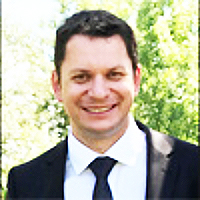Abstract
Research Article
Factors affecting physical activity of recuperating alcoholics in Asumbi-Homabay rehabiliation center, Kenya
Lucy Amanya Mutuli*, Peter Bukhala and Gordon Nguka and Gordon Nguka
Published: 24 October, 2018 | Volume 2 - Issue 1 | Pages: 028-034
Background: Alcoholism is a widespread problem in Kenya and is associated with severe impacts on health and quality of life of the individual. Physical activity is an affordable and sustainable adjunct treatment option for recuperating alcoholics; however its’ rarely used in rehabilitation of alcoholics in Kenya.
Objective: This qualitative study sought to elicit facilitators and barriers that influence the practice of physical activity amongst recuperating alcoholics under rehabilitation.
Methods: A focus group guide was utilized to gather views and perceptions of 15 alcoholics and 5 health professionals through focus group discussions. Constant comparative approach was used to analyze verbatim transcripts obtained from in-depth interviews. This analysis entailed three stages including open, axial and selective coding.
Results: Recuperating alcoholics’ recognized various forms of physical activity to promote mental and physical health during their rehabilitation. Health professionals and significant others considerably supported the recuperating alcoholics to practice physical activity however physical activity facilities and facilitation was lacking in Asumbi rehabilitation center.
Conclusions: The rehabilitation centres should have physical activity experts and facilities that can offer individualized physical activity services and support needed by the recuperating alcoholics.
Read Full Article HTML DOI: 10.29328/journal.jatr.1001008 Cite this Article Read Full Article PDF
Keywords:
Alcoholism; Physical activity; Psychosocial factors; Rehabilitation
References
- Sinclair J, Chick J, Sørensen P, Kiefer F, Batel P, et al. Can Alcohol Dependent Patients Adhere to An ‘as Needed’ Medication Regimen? European Addict Research. 2014; 20: 209–217. Ref.: https://goo.gl/eTvVZE
- Sari S, Bilberg. R, Kurt J, Søgaard-Nielsen A, Nielsen B, et al. Physical Exercise as a Supplement to Outpatient Treatment of Alcohol use Disorders a Randomized Controlled Trial. BMC Psychology. 2013; 1:23. Ref.: https://goo.gl/AUESXX
- Chesang RK. Drug Abuse among the Youth in Kenya. International Journal of Scientific & Technology Research. 2013; 2; 2277-8616. Ref.: https://goo.gl/gF54ja
- Kuria MW. Factors Associated with Relapse and Remission of Alcohol Dependent persons after Community Based Treatment. Open Journal of Psychiatry. 2013; 3: 264-272. Ref.: https://goo.gl/xRMVqM
- Chepkwony SJ, Chelule E, Barmao AC. An Investigation into Prevalence and Factors Contributing to Relapse among Alcoholics In Selected Rehabilitation Centers in Nairobi County, Kenya. International Journal of Innovative Research and Development. 2013; 2: Ref.: https://goo.gl/Zzxj1P
- Kahuthia-Gathu R, Okwarah P, Gakunju R, Thungu J. Trends and Emerging Drugs in Kenya: A Case Study in Mombasa and Nairobi County. Journal of Applied Biosciences. 2013; 67: 5308–5325. Ref.: https://goo.gl/gjHWxN
- Langat E, Wafula S, Ettyang G, Rotich J, Chelimo J, The Effect of Rehabilitation on Nutritional Status of Alcohol Dependent Males in Nairobi, Kenya. Journal of Biology, Agriculture and Healthcare. 2014; 4: Ref.: https://goo.gl/JDj3C5
- Ajzen I. The Theory of Planned Behavior, Organizational Behavior and Human Decision Process. Journal of Applied Social Psychology. 1991; 50: 179 –211. Ref.: https://goo.gl/dmN5eU
- Mathew RJ. Eating to Prevent Alcohol Cravings and Relapse. 2016; Ref.: https://goo.gl/ssy7m1
- Brown RA, Abrantes AM, Read JP, Marcus BH, Jakicic J, et al. Aerobic Exercise for Alcohol Recovery: Rationale, Program description, and Preliminary findings. Behavior Modification. 2009; 33: 220–249. Ref.: https://goo.gl/tCGCnw
- Karoly HC, Stevens CJ, Thayer RE, Magnan RE, Bryan AD, et al. Aerobic Exercise Moderates the Effect of Heavy Alcohol Consumption on White Matter Damage. Alcoholism, Clinical and Experimental Research. 2013; 37: 1508–1515. Ref.: https://goo.gl/1KXADR
- Zschucke E, Heinz A, Ströhle A. Exercise and Physical Activity in the Therapy of Substance use Disorders. Scientific World Journal. 2012; 901741. Ref.: https://goo.gl/zEdkYe
- French MT, Popovici I, Maclean JC. Do Alcohol Consumers Exercise more? Findings from a National Survey. Journal of Infection. 2009 24: 2–10. Ref.: https://goo.gl/SN59gX
- Smothers B, Bertolucci D. Alcohol Consumption and Health-promoting Behavior in a US Household Sample: Leisure-time Physical Activity. J Stud Alcohol. 2001; 62: 467–476. Ref.: https://goo.gl/Du9CH5
- National Institute of Clinical Health and Excellence. Alcohol-use Disorders: Diagnosis, Assessment and Management of Harmful drinking and Alcohol Dependence. London: National Institute of Clinical Health and Excellence. 2011;
- McEachan RRC, Conner M, Taylor NJ, Lawton RJ. Prospective Prediction of Health-Related Behaviors with the Theory of Planned Behavior: A meta-analysis. Health Psychology Review. 2001; 5: 97–144. Ref.: https://goo.gl/ePyw6d
Similar Articles
-
Factors affecting physical activity of recuperating alcoholics in Asumbi-Homabay rehabiliation center, KenyaLucy Amanya Mutuli*,Peter Bukhala and Gordon Nguka,Gordon Nguka. Factors affecting physical activity of recuperating alcoholics in Asumbi-Homabay rehabiliation center, Kenya . . 2018 doi: 10.29328/journal.jatr.1001008; 2: 028-034
-
Drug treatment and rehabilitation in China: Theoretical rationales and current situationsGloria Yuxuan Gu*. Drug treatment and rehabilitation in China: Theoretical rationales and current situations. . 2021 doi: 10.29328/journal.jatr.1001015; 5: 009-011
-
Psychosocial factors among end-stage kidney disease patients receiving hemodialysis treatment in Kumasi, GhanaThomas Nti Amoako*,Frances Emily Owusu-Ansah. Psychosocial factors among end-stage kidney disease patients receiving hemodialysis treatment in Kumasi, Ghana. . 2021 doi: 10.29328/journal.jatr.1001017; 5: 014-019
-
Drug Rehabilitation Centre-based Survey on Drug Dependence in District Shimla Himachal PradeshKanishka Saini,Palak Sharma,Bhawna Sharma*,Atul Kumar Dubey,Muskan Bhatnoo,Prajkta Thakur,Vanshika Chandel,Ritika Sinha. Drug Rehabilitation Centre-based Survey on Drug Dependence in District Shimla Himachal Pradesh. . 2025 doi: 10.29328/journal.jatr.1001032; 9: 001-006
Recently Viewed
-
A Comparative Analysis of Traditional Latent Fingerprint Visualization Methods and Innovative Silica Gel G Powder ApproachBhoomi Aggarwal*. A Comparative Analysis of Traditional Latent Fingerprint Visualization Methods and Innovative Silica Gel G Powder Approach. J Forensic Sci Res. 2024: doi: 10.29328/journal.jfsr.1001063; 8: 040-046
-
A Comparative Study of Metoprolol and Amlodipine on Mortality, Disability and Complication in Acute StrokeJayantee Kalita*,Dhiraj Kumar,Nagendra B Gutti,Sandeep K Gupta,Anadi Mishra,Vivek Singh. A Comparative Study of Metoprolol and Amlodipine on Mortality, Disability and Complication in Acute Stroke. J Neurosci Neurol Disord. 2025: doi: 10.29328/journal.jnnd.1001108; 9: 039-045
-
Huge Mucinous Cyst Adenoma, Case Report SeriesAli Mohammed Ali Elimam*,Isam Mohamed Babbiker,Reem Mohammed Elhaj Farah,Ayat Salih Abbas,Omer Mohamed Abubeker Sayed. Huge Mucinous Cyst Adenoma, Case Report Series. Clin J Obstet Gynecol. 2025: doi: 10.29328/journal.cjog.1001184; 8: 019-022
-
Does change in cervical dilation after anesthesia impact latency after cerclage placement?Michelle N Lende*, Paul J Feustel, Erica K Nicasio, Tara A Lynch. Does change in cervical dilation after anesthesia impact latency after cerclage placement?. Clin J Obstet Gynecol. 2023: doi: 10.29328/journal.cjog.1001125; 6: 028-031
-
Minimally invasive cytoreductive surgery in advanced ovarian cancer: A nonselected consecutive series of robotic-assisted casesNatalie Shammas*, Rosa Avila, Christopher Khatchadourian, Erland Laurence Spencer-Smith, Lisa Stern, Steven Vasilev. Minimally invasive cytoreductive surgery in advanced ovarian cancer: A nonselected consecutive series of robotic-assisted cases. Clin J Obstet Gynecol. 2023: doi: 10.29328/journal.cjog.1001126; 6: 032-037
Most Viewed
-
Evaluation of Biostimulants Based on Recovered Protein Hydrolysates from Animal By-products as Plant Growth EnhancersH Pérez-Aguilar*, M Lacruz-Asaro, F Arán-Ais. Evaluation of Biostimulants Based on Recovered Protein Hydrolysates from Animal By-products as Plant Growth Enhancers. J Plant Sci Phytopathol. 2023 doi: 10.29328/journal.jpsp.1001104; 7: 042-047
-
Sinonasal Myxoma Extending into the Orbit in a 4-Year Old: A Case PresentationJulian A Purrinos*, Ramzi Younis. Sinonasal Myxoma Extending into the Orbit in a 4-Year Old: A Case Presentation. Arch Case Rep. 2024 doi: 10.29328/journal.acr.1001099; 8: 075-077
-
Feasibility study of magnetic sensing for detecting single-neuron action potentialsDenis Tonini,Kai Wu,Renata Saha,Jian-Ping Wang*. Feasibility study of magnetic sensing for detecting single-neuron action potentials. Ann Biomed Sci Eng. 2022 doi: 10.29328/journal.abse.1001018; 6: 019-029
-
Pediatric Dysgerminoma: Unveiling a Rare Ovarian TumorFaten Limaiem*, Khalil Saffar, Ahmed Halouani. Pediatric Dysgerminoma: Unveiling a Rare Ovarian Tumor. Arch Case Rep. 2024 doi: 10.29328/journal.acr.1001087; 8: 010-013
-
Physical activity can change the physiological and psychological circumstances during COVID-19 pandemic: A narrative reviewKhashayar Maroufi*. Physical activity can change the physiological and psychological circumstances during COVID-19 pandemic: A narrative review. J Sports Med Ther. 2021 doi: 10.29328/journal.jsmt.1001051; 6: 001-007

HSPI: We're glad you're here. Please click "create a new Query" if you are a new visitor to our website and need further information from us.
If you are already a member of our network and need to keep track of any developments regarding a question you have already submitted, click "take me to my Query."














































































































































